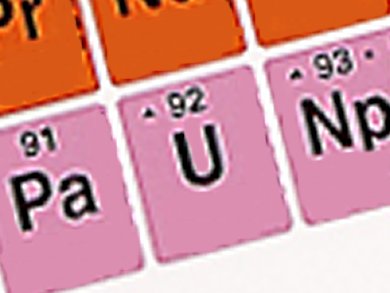Activation of the thermodynamically strong C=O bond in CO2 is the first step to using CO2 as a chemical feedstock. Uranium complexes have been explored as CO2 activators due to their oxophilicity, Lewis acidity, and highly reducing nature.
Karsten Meyer and colleagues, University Erlangen−Nuremberg, Germany, have performed theoretical studies on the uranium complex, [((MeArO)3mes)U] (mes=2,4,6-trimethylphenyl) with CO2. Reaction of [((MeArO)3mes)U] with toluene results in formation of the bridging carbonate complex [{((MeArO)3mes)UIV}2(μ-η2:η2-CO3)].
Discrete Fourier transform (DFT) studies suggest a three step mechanism that forms the dinuclear CO2 complex, releases CO to form the bridging μ-oxo species, then inserts a CO2 molecule into the U–O bond generating the carbonate product. The authors note that the activation energy of this route to carbonate from CO2 could be reduced through ligand modification.
- Carbonate Formation from CO2 via Oxo versus Oxalate Pathway: Theoretical Investigations into the Mechanism of Uranium-Mediated Carbonate Formation
L. Castro, O. P. Lam, S. C. Bart, K. Meyer, L. Maron,
Organometallics 2010, 29.
DOI: 10.1021/om100479r



